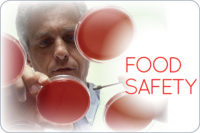At the Annual Meat Conference, Sam Gazdziak spoke with Erin Brenneman of Brenneman Pork about her talk on sustainability and how their family owned and operated farm uses technology to get more hands on.
Sam Gazdziak:We're here with Erin Brenneman from Brenneman Pork. So, we just had our talk about sustainability at the Annual Meat Conference. But, could you tell me a little bit about your company?
Erin Brenneman:Sure. Yeah. We are a family owned and operated farm. We're just over 20,000 sows in Southeast Iowa. And so there's just about ten full time, immediate family members working on the farm every day plus other employees.
Gazdziak:Okay. And, as part of the talk, you mentioned that you give tours of your plant, of your farm. I'm sure people have a lot of expectations coming in with 20,000 sows that it's a factory farm. So, could you talk maybe a little bit about what their preconceptions might be and what they see once they actually get there?
Brenneman:Right. I think that people have the conception that big equals bad and it's not necessarily that way. I think they expect it to be very automated, very hands off. Whereas, it's the exact opposite. You know, we have plenty of hands on. We have 24 hour care for our pigs. We have three shifts of people running 24 hours. We are very hands on. We are very intensive. And, us, the owners and the family members, are in the buildings with the animals every single day. And, so that is something I think they don't really expect is just the strong family aspect and the hands on management portion of it.
Gazdziak:Okay. And you'd mentioned a little bit about how you've used automation to become more people friendly with the sows. Could you talk a little more about what that's done?
Brenneman:My mind is constantly going. But, I was thinking about this the other day, about how people often view automation in a factory setting as dehumanizing. And, so a machine or a robot may take the place of a human, therefore it's more factory. But, in actuality in farming, it kind of takes a different turn. Whereas the automation that we have used and we have implemented has allowed us to go be more hands on with the animals. And, I used the example of our feed system. Our feed system conveys and dispenses feed to 1,250 sows in a faring house four times a day. And, to do that with people, it would take three times the amount of people twice the amount of time. So, now, what we are able to do with those people is to get back to the pigs and get back to the basics. And, help a pig be born and dry him off and get him milk. And, that part is what technology has brought us is more human side of farming.



